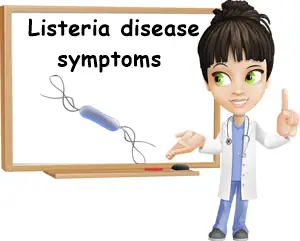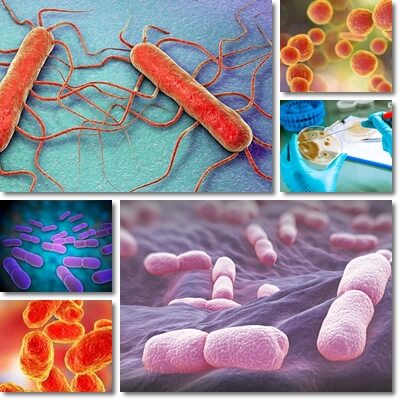Bacterial infections are one of the most common type of infections and a major source of outbreaks worldwide. The recent Listeria outbreak in Europe continues a cycle of infections that have apparently started back in August 2016 and are believed to have their origins in a Hungarian frozen food processing plant. The outbreak has been caused by consumption of frozen corn and possibly other frozen vegetable products contaminated with the bacterium strain called Listeria monocytogenes. This particular strain is one of the most virulent food-related pathogens known to man and found to colonize not only the gastrointestinal tract and the blood, but also the central nervous system and even the heart. If you suspect you may have consumed food contaminated with Listeria monocytogenes or exhibit symptoms that you may attribute to the bacterial infection caused by it, see your doctor immediately for treatment.
What is Listeria? The name ‘Listeria’ refers to a genus of bacteria (or a group of related bacteria). In total, 15 species of Listeria have been identified up until this point. Each species has at least 2 known subspecies and several serotypes (or variations of the bacterium). Of all known species, Listeria monocytogenes is the primary causative agent of food-related illness in humans and several animals. Listeria monocytogenes is a highly virulent bacterium strain, meaning it has the potential to cause aggressive illness and can be fatal for high-risk categories such as children, the elderly or people with compromised immune systems, for whom urgent treatment is imperative.

What is Listeria infection? A listeria infection is called listeriosis. It can affect the gastrointestinal tract or, in severe cases, infect the central nervous system, heart and bloodstream. Listeriosis is primarily caused by the subspecies Listeria monocytogenes, but Listeria ivanovii and Listeria grayi are also possible causes. Listeria monocytogenes is the primary disease-causing agent in humans, while L. ivanovii and L. grayi are known to cause disease primarily in ruminants, mice and other animals. Rarely, the disease from these two latter strains (L. ivanovii and L. grayi) may be passed onto humans.
The ongoing 2018 Listeria outbreak is attributed to the strain known as Listeria monocytogenes.
Listeria monocytogenes characteristics
Listeria monocytogenes is a Gram-positive bacterium because it stains violet when subjected to the Gram-stain test. See the Difference between Gram Negative and Gram positive Bacteria. Listeria monocytogenes is shaped like a rod, making it a bacillus, but doesn’t form spores. It is a motile bacterium, meaning it moves around using flagella (projections employed for independent movement).
However, at body temperature (37 degrees Celsius) and upwards, it cannot produce flagella for movement, but still remains virulent. Lastly, Listeria monocytogenes is facultative anaerobic, meaning it can grow and multiply in the presence of oxygen as well as in the absence of oxygen, similar to pathogenic Staphylococcus, Salmonella and E. coli bacteria. Overall, it is a hardy bacterium which can survive almost freezing temperatures and thrives at body temperature (37 degrees Celsius).
Types of disease
There are 2 main types of Listeria monocytogenes disease: non-invasive and invasive.
1) In the non-invasive form, the infection takes place in the gastrointestinal tract and causes a form of disease similar to other bacterial gastroenteritis forms. See Gastroenteritis: Causes, Symptoms and Treatment.
2) In the invasive form, the Listeria bacteria from the stomach enter the bloodstream and can even cross the blood-brain barrier and reach the central nervous system (brain, brain stem, meninges, cerebrospinal fluid). Rarely, the bacteria can infect organs such as the heart. The invasive form of the disease is the cause for severe illness and represents a medical emergency.

Virtually anyone can develop either a mild or a severe form of the infection. However, several categories of people are more likely to experience severe forms of listeriosis, including: newborns and small children, the elderly and anyone with a compromised immune system, whether because of pre-existing illness (HIV, AIDS) or anti-cancer therapies or medication that suppress the immune system (radiation, chemotherapy). Pregnant women are also a high-risk category for listeria disease, but the risk is generally higher for the baby than for the mother.
Listeria infection signs and symptoms
Depending on the type of infection it causes, symptoms of Listeria infection include:
1) Gastroenteritis-like symptoms (diarrheal disease): nausea, vomiting sensation, loose stools and diarrhea, abdominal cramps and pain, back pain, fever, headaches. All common in both mild and severe listeriosis.
2) Flu-like symptoms: fatigue, malaise, muscle aches and pain, joint pain (present in mild forms of the disease, affecting the gastrointestinal tract), neck stiffness, neck pain, headaches, fever, confusion, seizures (may indicate a severe form of the infection).
3) In newborns: problems feeding, fever, irritability.
Complications include: cranial nerve paralysis, brain abscesses, meningitis (inflammation of the meninges, membranes covering the brain and spinal cord), encephalitis (inflammation of the brain) and meningoencephalitis (brain and meninges inflammation), endocarditis (inflammation of the heart membrane).
Listeriosis in pregnancy is particularly dangerous as it can predispose to complications, particularly for the baby. Listeria infection in pregnancy can cause premature birth, stillbirth and miscarriage. In newborns, complications of the infection include sepsis, meningitis, encephalitis, meningoencephalitis, nerve damage or worse.
How long does Listeria infection last?
Mild, non-invasive listeriosis is self-resolving and presents with gastrointestinal symptoms which may last 7-10 days. The diarrhea itself lasts between 1-4 days on average and can cause up to 10-12 loose stools a day. The mild form of the infection usually only occurs in healthy adults with well-developed, strong immune systems.
Severe listeriosis lasts several weeks, depending on where the infection is located and what complications it produces. Treatment alone may require a minimum of two weeks to suppress the infection.
Incubation time for Listeria
The mild form of the disease that causes gastrointestinal symptoms may require as little as 1 day for incubation or up to a week or more. Symptoms of invasive listeriosis are reported to occur between 7 days and 1 month following exposure, with an average of 20-23 days. However, the bacteria may require as little as 1 day or as much as 70 days for incubation, even for more severe cases.
How is Listeria transmitted?
For the most part, Listeria infection in adults is caused by ingestion of a certain number of bacteria from contaminated food, hence the reason Listeria is a food-borne illness. In newborn babies, the infection is usually transmitted from the mother during pregnancy or during delivery.
What causes Listeria infection?
Routes of contamination and infection include:
1) Contaminated food. Food such as fruits and vegetables may be contaminated in the field from contaminated water (sewer water and greywater used for irrigation), manure or as a result of the presence of sick animals (example: cattle, birds). Food may be contaminated during the distribution chain, either from workers or surfaces in the processing plant itself. Sometimes contamination occurs when handling the food in eating establishments. Meat products and dairy are contaminated if the animals providing them are infected as well or as a result of improper handling somewhere during the distribution chain.
2) Improper cooking. Not cooking contaminated food well enough allows the bacteria to survive and produce infection.
3) Contaminated water. Usually sewage water and greywater used for irrigation of food crops.
4) Contaminated surfaces. In food processing plants, home kitchens, restaurants and other eating establishments.
5) Contaminated soil. Food grown in contaminated soil can also get contaminated with the bacteria, especially foods that grow underground, close to the ground or fruits fallen from trees on the ground. Soil contamination occurs from irrigation water, manure and stool matter from infected animals.
What are the most common foods with Listeria?
Believe it or not, pathogenic Listeria bacteria don’t have any favorite foods. Any food can potentially be contaminated from the sources above. Up until 2018, Listeria contaminated vegetables, fruits and other foods list includes:
1) Packaged salads.
2) Cantaloupe.
3) Bean sprouts.
4) Frozen vegetables: corn, vegetable mixes.
5) Raw milk (unpasteurized).
6) Soft, raw milk cheese, ricotta.
7) Ice cream.
8) Processed meat products: hot dogs, cold meats.
Other potential sources of infection include: contaminated fresh and frozen fruit and vegetables, unpasteurized fruit and vegetable juices, sprouts, raw (unpasteurized) milk, soft raw milk cheeses (Brie, Camembert, Ricotta, Queso fresco, Queso blanco) and all cheeses made with unpasteurized milk. For more information on the benefits and health risks of various cheese varieties, see our Dairy page.
Raw chicken and poultry, beef, sheep meat, cold meats (ham, smoked sausages, loaf meats, salami etc.), undercooked meat or milk, raw and smoked fish and shellfish. See Fish and Shellfish page.
Listeria infection treatment
The mild, non-invasive forms of the infection that usually only cause gastroenteritis are self-resolving in healthy adults and may not require any treatment at all. Fluid therapy and bed rest are important for managing symptoms, similar to self-resolving gastroenteritis caused by an E. coli infection. See E. Coli Infection: Causes, Symptoms and Treatment.
Severe, invasive Listeria monocytogenes infection requires immediate antibiotic treatment. Depending on the severity and site of the infection (bloodstream, brain, meninges), antibiotic treatment may last from a couple of weeks to up to two months.
Conclusion
If you suspect you have eaten Listeria monocytogenes contaminated food, see your doctor as soon as possible. If you exhibit symptoms that may be attributed to a severe form of the infection, such as headaches, especially at the back of the head, neck stiffness, confusion or seizures, seek medical help immediately. These symptoms may indicate the bacteria have migrated to the brain or other parts of the central nervous system. At this point, the Listeria infection constitutes a medical emergency and requires prompt medical attention and treatment.
If you are pregnant, over 65, immunodeficient from HIV, AIDS, chemotherapy or chronic diseases, avoid high risk foods such as undercooked meat or fish, cured meat or fish, unpasteurized milk and dairy made from unpasteurized milk, wash fruits and vegetables very well, cook them if needed and avoid raw or undercooked sprouts. Store high-risk foods in the refrigerator and cook those that need cooking (especially meat products) as well as disinfect kitchen surfaces that come into contact with raw meat, produce or unpasteurized milk products and maintain good hygiene in general.
